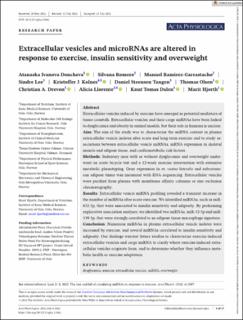| dc.contributor.author | Doncheva, Atanaska Ivanova | |
| dc.contributor.author | Romero, Silvana Angelica Troncoso | |
| dc.contributor.author | Ramirez-Garrastacho, Manuel | |
| dc.contributor.author | Lee-Ødegård, Sindre | |
| dc.contributor.author | Kolnes, Kristoffer Jensen | |
| dc.contributor.author | Olsen, Thomas | |
| dc.contributor.author | Llorente, Alicia | |
| dc.contributor.author | Dalen, Knut Tomas | |
| dc.contributor.author | Hjorth, Marit | |
| dc.contributor.author | Tangen, Daniel Steensen | |
| dc.contributor.author | Drevon, Christian A. | |
| dc.date.accessioned | 2023-03-09T08:14:26Z | |
| dc.date.available | 2023-03-09T08:14:26Z | |
| dc.date.created | 2022-07-29T11:54:22Z | |
| dc.date.issued | 2022 | |
| dc.identifier.citation | Acta Physiologica. 2022, 236(4), Artikkel e13862. | en_US |
| dc.identifier.issn | 1748-1708 | |
| dc.identifier.uri | https://hdl.handle.net/11250/3057227 | |
| dc.description | This is an open access article under the terms of the Creative Commons Attribution-NonCommercial-NoDerivs License, which permits use and distribution in any medium, provided the original work is properly cited, the use is non-commercial and no modifications or adaptions are made. | en_US |
| dc.description.abstract | Abstract: Extracellular vesicles induced by exercise have emerged as potential mediators of tissue crosstalk. Extracellular vesicles and their cargo miRNAs have been linked to dysglycemia and obesity in animal models, but their role in humans is unclear.
Aim: The aim of the study was to characterize the miRNA content in plasma extracellular vesicle isolates after acute and long-term exercise and to study associations between extracellular vesicle miRNAs, mRNA expression in skeletal muscle and adipose tissue, and cardiometabolic risk factors.
Methods: Sedentary men with or without dysglycemia and overweight underwent an acute bicycle test and a 12-week exercise intervention with extensive metabolic phenotyping. Gene expression in m. vastus lateralis and subcutaneous adipose tissue was measured with RNA sequencing. Extracellular vesicles were purified from plasma with membrane affinity columns or size exclusion chromatography.
Results: Extracellular vesicle miRNA profiling revealed a transient increase in the number of miRNAs after acute exercise. We identified miRNAs, such as miR-652-3p, that were associated to insulin sensitivity and adiposity. By performing explorative association analyses, we identified two miRNAs, miR-32-5p and miR-339-3p, that were strongly correlated to an adipose tissue macrophage signature.
Conclusion: Numerous miRNAs in plasma extracellular vesicle isolates were increased by exercise, and several miRNAs correlated to insulin sensitivity and adiposity. Our findings warrant future studies to characterize exercise-induced extracellular vesicles and cargo miRNA to clarify where exercise-induced extracellular vesicles originate from, and to determine whether they influence metabolic health or exercise adaptation. | en_US |
| dc.language.iso | eng | en_US |
| dc.subject | dysglycemia | en_US |
| dc.subject | exercise | en_US |
| dc.subject | extracellular vesicles | en_US |
| dc.subject | miRNA | en_US |
| dc.subject | overweight | en_US |
| dc.title | Extracellular vesicles and microRNAs are altered in response to exercise, insulin sensitivity and overweight | en_US |
| dc.type | Peer reviewed | en_US |
| dc.type | Journal article | en_US |
| dc.description.version | publishedVersion | en_US |
| dc.rights.holder | © 2022 The Authors | en_US |
| dc.source.pagenumber | 17 | en_US |
| dc.source.volume | 236 | en_US |
| dc.source.journal | Acta Physiologica | en_US |
| dc.source.issue | 4 | en_US |
| dc.identifier.doi | 10.1111/apha.13862 | |
| dc.identifier.cristin | 2040051 | |
| dc.description.localcode | Institutt for fysisk prestasjonsevne / Department of Physical Performance | en_US |
| dc.source.articlenumber | e13862 | en_US |
| cristin.ispublished | true | |
| cristin.fulltext | original | |
| cristin.fulltext | original | |
| cristin.qualitycode | 2 | |
